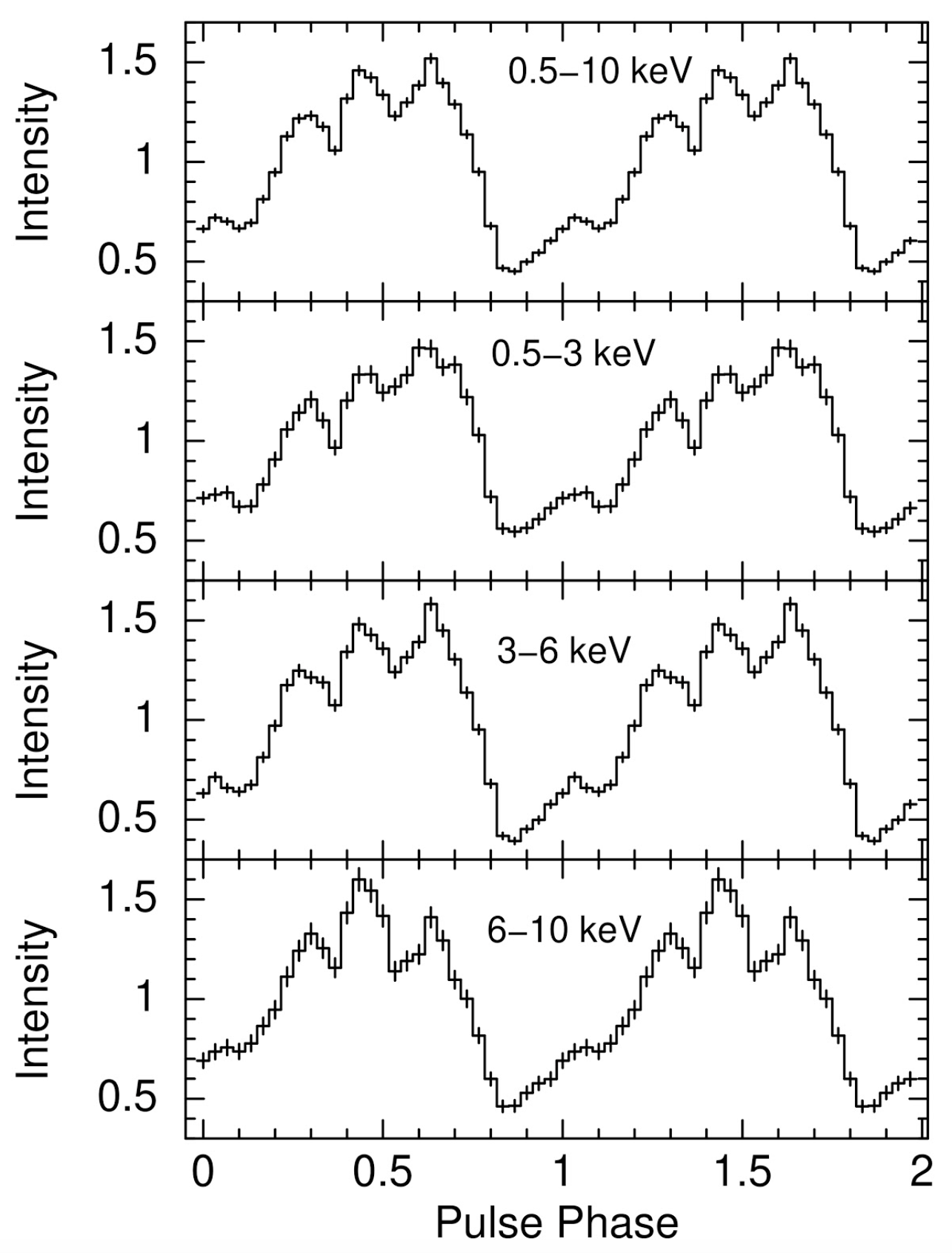NICER / ISS Science Nugget
for October 24, 2019
NICER discovers pulsations from new transient Swift J1845.7-0037
During the week of October 12th, when NICER was powered down due to ELC
power issues, we received a Target of Opportunity (TOO) request to
observe a new transient found by JAXA's MAXI payload (also on the ISS).
NASA's Swift observatory produced a better localization of the new
target, which is now called Swift J1845.7-0037.
As soon as power was restored to NICER on Oct 19th, NICER conducted a
series of observations of this new transient. NICER found that it is a
pulsar with a period of 207.4 seconds (see figure).

Figure:
NICER light curves, folded on the 207.4 sec period, of Swift
J1845.7-0037 in several X-ray energy ranges. Figure by G. Jaisawal of
the Technical University of Denmark.
NICER continues to monitor Swift J1845.7-0037 to better understand the
characteristics of this newly found pulsar.
Initial analysis suggests that this is a Be X-ray Binary (BeXRB).
BeXRBs are a class of high-mass X-ray binaries that consist of a Be star
and a neutron star. The neutron star is usually in a wide, highly
elliptical orbit around the Be star. The Be stellar wind forms a disk
confined to a plane often different from the orbital plane of the
neutron star. When the neutron star passes through the Be disk, it
accretes a large amount of gas in a short time which produces a large
outburst of radiation.
<< Previous
Main Index
Next >>